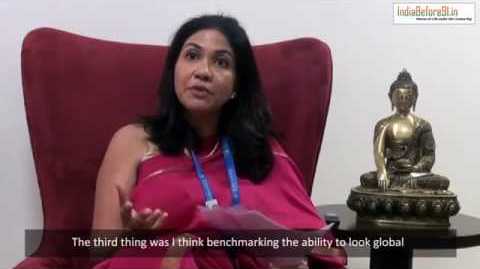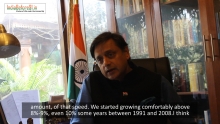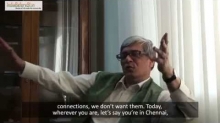'Vidya Shah, CEO of EdelGive Foundation talks about the rise of entrepreneurship and the breakdown of traditional industrial empires that were built in the latter half of the 21st century. She also discusses the access to technology, which was previous not made available in a market that was limited in choice and competition and how freer markets spurred creativity and innovation.'
Read the complete transcript below:
And I think there were three or four very interesting things that happened not possibly immediately but over a period of time. The first thing was really the rise of entrepreneurship and the breakdown of… in some ways of the traditional few industrial empires that had gotten built over the 50 odd years since independence…not really independence but certainly around that time. The second thing was really the access to technology and know-how, which again was previously not available in a market that was so limited in competition and choice. You found that you still had your fiats and ambassadors when the world had already moved on to Honda and Toyota by then. The third thing was I think benchmarking the ability to look global and see the kinds of enterprises that had gotten formed in countries that had freer markets. The creativity and innovation that came along with free markets. So that benchmarking was now suddenly available and it was possible to start thinking not really of an Indian market but also for global market. And then consequently the increased competition, the increased availability of choice and I think the biggest thing was job creation. Really, the number of jobs that got created because of the reforms processes is something that I don’t know if there is any documentation around it. So, I think the biggest thing was really the entrepreneurism that got unleashed and I would say that even Edel Weiss was really a product of the reforms process, the ability to think that we could put together an enterprise like this in 1995-96 is really because we saw these two things happening, the trade barriers going away in all kinds of industries and then the loosening of capital flows. I think my very early memories and I may have been just under 5 years of age where it was also close to the Indo-Pak war and possibly restrictions as a result of both the rationing. So rationing is a very very clear memory for me and I remember accompanying my parents really going through small gullies to the ration shop to really get rice quota and wheat quota and I have very very clear memories of that. It never occurred to me to question it but those memories are clear partly because I know how my parents would budget and account for consumption because of the controls that we saw at that time and I also remember about petrol. Not just about food grains but also about petrol and how kerosene. Kerosene was also rationed for household purposes. The use of domestic gas was very very limited and then petrol for cars came out much later where it was a luxury good at that time. So, those memories are very clear. I think what the lack of choice does is that you don’t even know the possibilities and that was probably the case before 91 where it was okay to have limited needs because the choices were so few and this was across the spectrum. This is not just an FMCG or automobiles but it was also in a lot of other areas like if you look at telephony or if you look at access to power distribution companies. You had a more basic level. Choice has actually opened up possibilities for the Indian consumer. I think Indian consumers have become a lot more picky. Brands have emerged. The emphasis is not just on products but brands and the amount of money that gets spent on creation of brands itself is something that is quite telling. I think there is instant feedback now partly because of social media and therefore any organization or commercial enterprise that has to provide products and services is constantly looking for that differentiation and that x factor that would enable them to be top of the mind recall for the consumers. So the consumers had it really good. Also, if you see inflations adjusted the costs of lot of goods have come down. So it’s been incredible actually for the Indian consumer.







